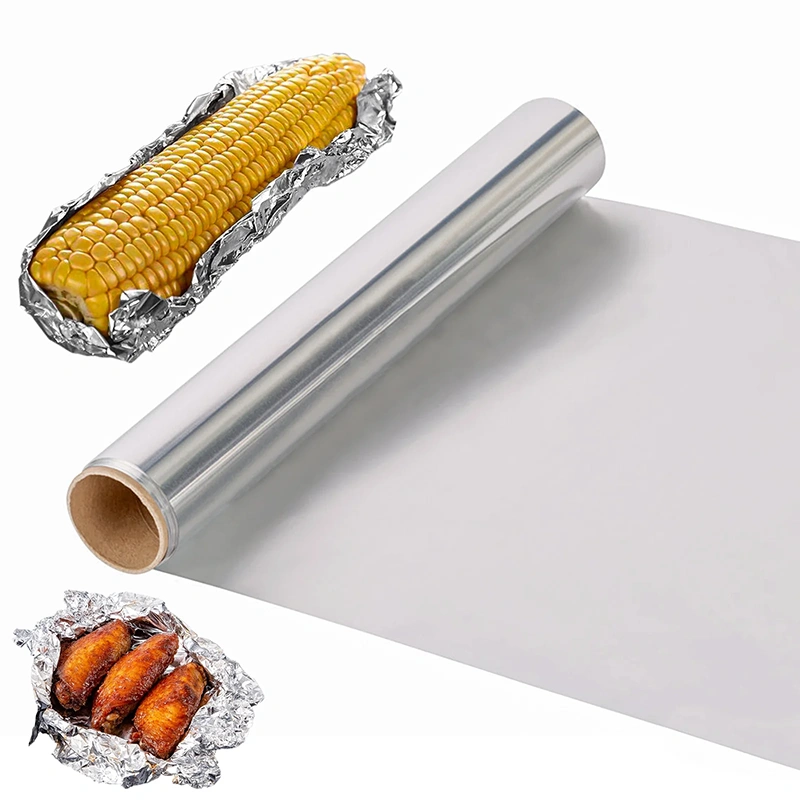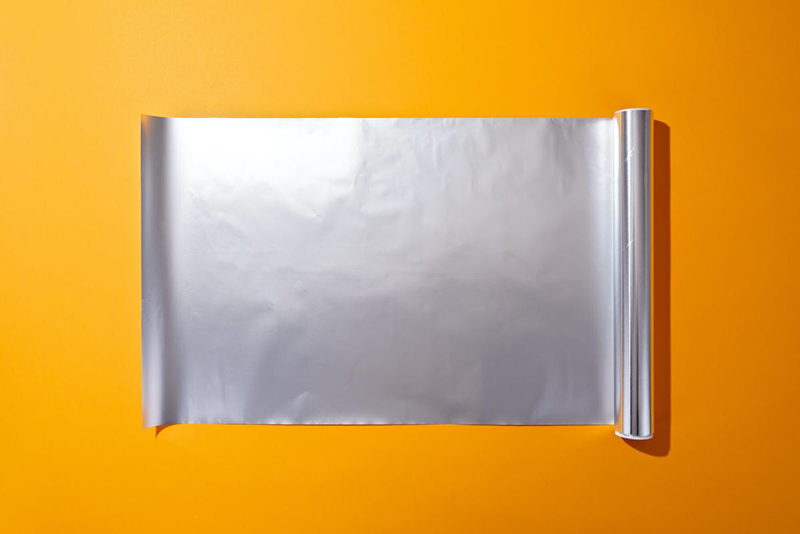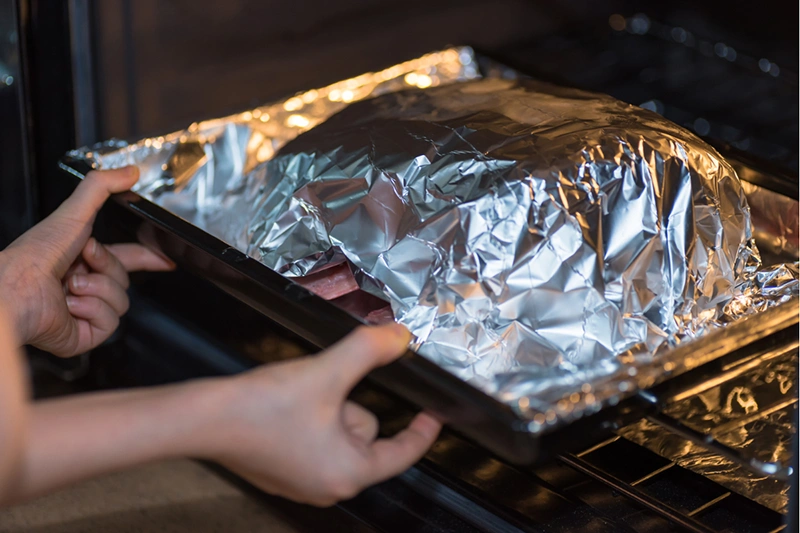Foil Roll Introduction
Aluminum foil is essential for cooking, but people often don’t know which side to use.

Aluminum foil, also referred to as tin foil, is a culinary material that withstands high temperatures, heat, and wear. It can not only prevent food from sticking to the container but also protect the oven from oil stains. Aluminum foil not only enhances baking efficiency but also prevents the spillage of food grease and liquid.
Aluminum foil for daily cooking, grilling, baking, and barbecuing is more common. For example, potato chip packaging, pudding lids, etc.
Tinfoil, made from tin, has the disadvantage of retaining tin odor in meals and being softer than aluminum foil. However, as aluminum prices dropped later, aluminum took on the role of tinfoil, giving rise to the current “aluminum foil.”
Aluminum Foil Roll Glossy and Matte Sides: How to Use
- The glossy and matte surfaces of aluminum foil are only different in appearance.
The difference between the bright side and the matte side of aluminum foil paper is only in appearance. In the final step, both sides passed through the rolling mill at the same time, with the highly polished side in touch with the machine being the bright side.

- Foil has no significant difference in heating or heat conduction
Should aluminum foil be glossy or matte? It has no difference between the shiny or matte side of the aluminum foil facing outward and the level of heat transfer. As a result, the front and back sides have similar heat and insulating properties.
Do You Still Use Tin Foil?
Tin foil appeared in the 17th century and became popular in the late 19th century. After World War II, aluminum foil replaced tin foil as the price of aluminum fell. Nowadays, “tin foil” is still a common term for aluminum foil.
Should I continue to use tinfoil? This is because tinfoil will change color if left for too long or stored improperly. Some tin foil will turn gray, and some will turn black.
Once it turns black, you cannot use it. Because tinfoil will undergo an oxidation reaction and produce tin, it can easily cause harm to the human body. Therefore, I recommend that you discard the discolored tin foil directly.
Is Aluminum Foil Toxic?
Aluminum is a heavy metal, and excessive intake may affect the nervous system. The FDA warns that acidic foods or sauces will corrode aluminum foil and dissolve aluminum ions. You can cook the food first, remove the foil, and then add vinegar, lemon, ketchup, and other acidic substances. Note: If there are scratches on the surface of the aluminum foil, I recommend you replace it with a new one.
Is Aluminum Foil Microwavable?
Never microwave aluminum foil. Aluminum foil is metal. And it will reflect microwaves, cause sparks, damage the microwave, and reduce the heating effect of food.
Even though the oven may seem safe, you should be careful with it. When using it, you need to pay attention to the distance between the aluminum foil paper and the heating lamp. When cooking in the microwave, some people use small pieces of aluminum foil to “shield” food. This is the right thing to do.
Under some settings, using small bits of aluminum foil in microwave ovens is safe, according to the US FDA.

Microwave-Safe Aluminum Foil:
- Use new and smooth aluminum foil; wrinkled aluminum foil can cause sparks.
- Hold the foil smoothly against the food so the edges don’t stick out.
- Aluminum foil covers no more than 1/4 of the food.
- Keep the aluminum foil at least 2.5 cm away from the oven wall.
When Foil Roll is Not Allowed to be Microwaved:
- The microwave oven has a metal rack or metal turntable inside.
- The instructions indicate that aluminum foil should not be used.
- See sparks when microwaving.
Household Foil Roll Applications
Wrap food for cooking to keep it tender and juicy.
Bake cakes, biscuits, and cookies.
Wrap food for refrigeration to prevent freezer burn and frostbite.
Keep fresh.
Grilling.
Use it as a grill pan or grill liner for easy cleanup.Interesting Aluminum Foil Roll Application Examples
Once the brown sugar has softened, wrap the hard brown sugar in aluminum foil and bake in a 350-degree oven for 5 minutes.
Keep vegetables fresher longer, wrap them in aluminum foil, and store them in the refrigerator.
For the funnel, you can fold a large piece of sturdy aluminum foil into a cone shape.
When making ice cream, place a piece of aluminum foil on top for better shaping.
Keep your oven clean by covering the racks with a layer of aluminum foil to prevent splatters and spills.
pastry piping bag (make your own) made from sturdy aluminium foil and shaped into a cone, making sure to fold the edges in.
When baking, to prevent the pie crust from over-baking, line the edges with aluminum foil.
Food tray, make your own large disposable shallow tray.
Scrub pots and pans, crumbling aluminum foil to use as a pot and pan scrubber.
To make a cake mold, use a double layer of strong aluminum foil to form the shape you want.



